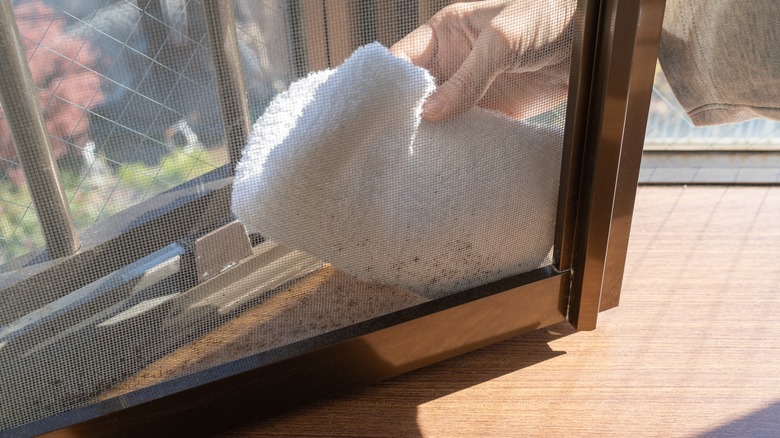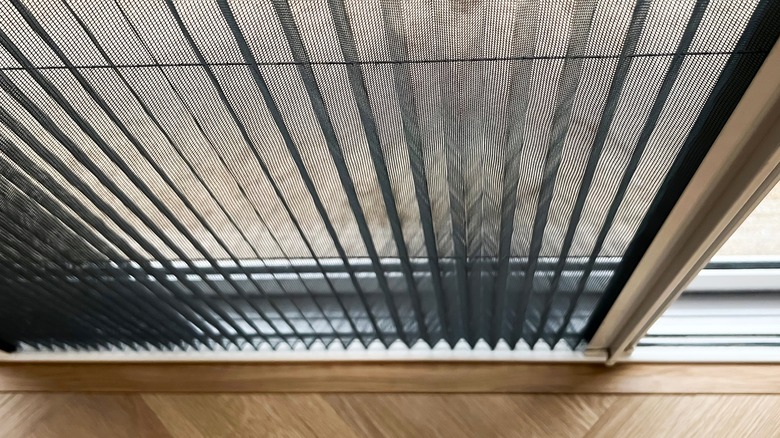The Trick To Good-As-New Screen Doors Is Possibly Already In Your Garage
Window and door screens can be hard to replace, but because they are exposed to the elements, you start to notice discoloration and deterioration over time. If they are structurally still in good condition, you may be able to use an automotive vinyl protectant product on them to restore their look. This method isn't advisable if the screen has tears or significant damage, but it will work well from UV discoloration and fading of the screen itself.
Automotive vinyl protectant may already be in your garage. Traditionally, You can use this product to clean the interior trim and restore the like-new look of the dashboard in most cars. The same product works well to restore the look of your screens throughout the home. If you've thoroughly cleaned The screen, but it still looks dull, faded, or worn, using this product could help. First, make any necessary repairs to the mesh screen, then it's time to make them look like new again.
Why choose a vinyl protectant like this?
Used in a vehicle, vinyl protectants work to clean and restore the luster. Surfaces, like the dashboard, are exposed to direct UV light for hours each day, which causes fading to occur. The heat's intensity can also damage these surfaces, causing them to dry out, especially in older cars. The application of automotive protectants like this adds a layer of protection over the top, minimizing the impact and restoring moisture loss to the vinyl or rubber.
When used on your screen doors, it will do the same thing since the screen itself has the same overall vinyl or rubber-like makeup. It doesn't clog up the holes in the screen but is absorbed into the material itself. You can also use an automotive protectant spray over the top to add a layer of UV protection for the screen as a preventative measure.
If you decide to go this route to restore your screens, choose the right automotive protectant spray. Look for a low-glass product, one that does not have a color to it. You don't want it to feel sticky to the touch later, as that will allow dust to adhere to the surface, making it much harder to clean next time.
How to use automotive vinyl protectant on your screen doors
The process for applying automotive protectants to the screen door takes just a few simple steps. It's often best to do the entire screen at the same time, though you can use this method to spot treat specific areas of discoloration as well. First, remove the screen and place it on the ground. Place a piece of cardboard or disposable fabric behind the screen itself to capture any excess spray. Then, follow the manufacturer's suggestions for application. Most of the time, that simply means spraying a light coating of the protectant onto the screen. Keep the spray several inches from the screen's surface and move your hand over the surface, spraying evenly. You don't want this to be too thick.
Allow this to dry fully for a few hours. Then, flip over the door to do the other side. Use a soft, clean cloth to wipe the frame and screen to remove any excess. Allow it to dry fully before you place the sliding screen door back on the track. You can repeat this process once a year (or more often if needed) to restore the look of your screen.


